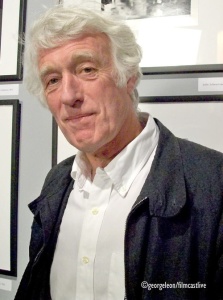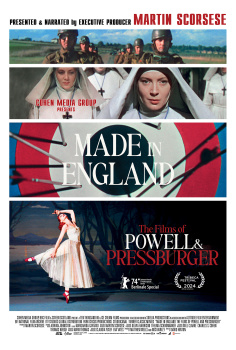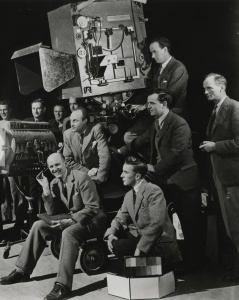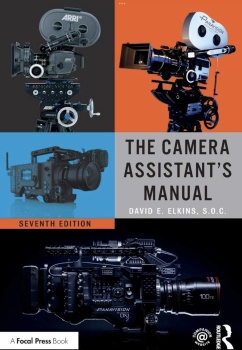By George Leon
Aerial cinematography often encompasses more than air-to-air photography of other aircraft. Sometimes the aerial cinematographer is called upon to facilitate photography from the ground and within the aircraft itself. Aircraft used in aerial cinematography are designated by the Aerial Cinematographer and Aerial Coordinator as either a camera ship or story ship.
Many types of
fixed-wing and
rotorcraft aircraft are utilized with helicopters being the most versatile for most camera ship duties. The choice and use of camera ship aircraft should be decided upon by the
aerial cinematographer working closely with the
aerial coordinator and
camera ship pilot. However, the aerial coordinator is the first and last word on all matters regarding the acquisition, permitting and use of all aircraft on a motion picture aerial unit production.
 Eclipse Camera System
Eclipse Camera System
Helicopters are the aircraft of choice for the majority of aerial cinematography duties as they offer the most in versatility. The ability for
multidirectional flight gives the aerial cinematographer control and finesse over the movement of the camera much like the director of photography would do with any ground-based camera dolly.
Choosing a suitable
rotor craft camera ship is predicated on the demands of the shot and the camera mounting system to be used. The ones shown here are the most utilized with the majority of commercially available filming systems having been designed and/or certificated for installation. Equally important to consider are the many variables affecting the
inflight performance characteristics of the helicopter, the most significant being air temperature, pressure & density altitude, moisture content of the air, gross weight, external stores (ball mounts in particular fall under this heading) and wind.
In addition, each helicopter has its own maximum airspeed limitations
(expressed as VNE - velocity never to exceed) which will be further reduced by the installation of any camera mounting system. There are definite reasons for these limitations and under no circumstances should they ever be exceeded. Number of people on board factors into the aircraft gross weight which will affect performance, particularly at altitude or during hover. Increased weight aside, with certain camera mounts there quite frankly will not be enough room left, beyond the pilot and operator, to accommodate any more passengers other than maybe the director.

Consult all aspects of the shot with the
Aerial Cinematographer,
Aerial Coordinator and
Camera Ship Pilot will ensure a safe and intelligent choice of helicopter for all camera ship duties on the production.
Safety for all cast and crew members actively involved in the film production is the number one priority for the aerial cinematographer, aerial coordinator and the aerial filming unit. Working around aircraft can prove to be hazardous if sufficient care is not taken to ensure personal safety. Those individuals who make their primary living in
aerial cinematography know all too well the dangers involved and strive to maintain a safe working environment in the air and on the ground for themselves and their colleagues.
Camera mounts are the essential tool of the aerial cinematographer, linking camera to aircraft. There are many from which to choose and generally fall into the following categories: Gyro Stabilized Ball Mounts, simply referred to as ball mounts due to the spherical wind shroud. Utilized for highly stable, plate-quality images. Door Mounts Also known as side mounts. Mainly designed for helicopter usage. Some fixed-wing available. Nose Mounts Also known as belly mounts. Can be an articulated system, however, some are fixed position (hard) mounts.
Helicopter or Fixed-Wing
Choice of system depends entirely on the nature of the shot. No one filming system is superior over another. Rather it boils down to suitability to task. It's common to employ any combination of these mounts during a film production. For budgetary reasons, consult the aerial cinematographer on the demands of the shot to ensure the correct choice of mount.
As a cross section example of the aerial cinematography technology, I will describe the services of a well known helicopter aerial cinematography company and some the features they offer to the rotor, fixed wing and telescopic crane market for air, dry land and maritime uses.

Pictorvision is the first aerial equipment stabilization rental company to provide customers with an entire spectrum of stabilized camera product solutions for capturing aerial images. Pictorvision provides choice: matching the right system to any budget, removing single system and rigid price point constraints. Whether your production calls for high-end 4K digital, 35mm, cost effective SD, Super 16mm, or anything in between, Pictorvision's product suite covers the entire range of output options, offering you the flexibility to pick and choose as you see fit.

Pictorvision offers "choice" - a revolutionary concept in the aerial camera system rental market through a product suite of aerial systems: eclipse, Cineflex Wescam, RED One, Wescam 35mm, Wescam HD and Wescam SD
The Originator of the Gyro-Stabilized CameraThe same people who brought you the pioneering stabilization work at Wescam stand behind Pictorvision today. As Wescam, we originated the gyro-stabilized aerial camera platform – an innovation that won us an Academy Award for widening the entertainment industry’s creative possibilities. As Pictorvision, we evolved to become the industry leader not only in stabilized technology, but also in service. We take a strong customer-centric approach as your stabilized equipment solution partner. Our highly responsive and knowledgeable team is committed to ensuring that Pictorvision exceeds your expectations – every time! eclipse - A Helicopter Camera Mount with Unrivalled Stability Pictorvision is proud to introduce the eclipse - the first truly revolutionary advancement in aerial camera systems in a generation.
Designed by the team who invented aerial stabilization over 35 years ago, and in partnership with cinematographers, the eclipse embodies a commitment, focus and passion for aerial cinematography. At the core of the eclipse's superior stability is the patented XR Motion Management technology, enabling the most advanced steering, stability and pointing capabilities available on the market. Pictorvision's engineering group - the team behind every major advancement in aerial stabilization - partnered with the world's most creative DP's to develop the eclipse, ushering in a new dawn in cinematography.
The Pictorvision eclipse features
XR Motion Management technology that enables the highest level of stability, unmatched precise and responsive steering,
Geo steering, will not topple, absolute level horizon and faster start-ups and resets.
Wescam RED OneA First for Aerial Cinematography Pictorvision is the first aerial stabilization company to use the revolutionary
RED ONE digital cinema camera in aerial shooting. Capitalizing on their expertise in camera stabilization technology, the team at Pictorvision can quickly make modifications necessary to successfully stabilize and accurately integrate the
RED ONE camera package into our
Wescam Film/HD System. The modular design of the
Wescam Film System makes the integration very simple. Our
multi-format, HD ready operator’s monitor (standard equipment with the system) makes monitoring the
HD-SDI output from the camera effortless for our technicians. Pictorvision customers can immediately make reservations for the company’s proprietary
RED ONE aerial stabilization and precision control turnkey package or integrate their own
RED ONE camera.


The Pictorvision XR
The Most Stable Ground Camera System for the Most Challenging Environments Pictorvision provides customers with the most stable and versatile gyro-stabilized remote head in the industry. The XR has exceeded expectations on some of the largest productions and is recognized for its stabilization performance and reliability in the most challenging of environments.The XR was the first system to utilize Pictorvision's patented XR Motion Management technology, setting new industry standards for pushing creative limits.
The Pictorvision XR, is an advanced open mount, digitally controlled and gyro-stabilized camera platform capable of supporting and stabilizing film and video camera packages up to 70Kg at film camera focal lengths of 3000mm or more. The system is extremely flexible and can be mounted in hanging or sitting mode on camera cars, boats, cranes as well as rail camera and flown wire systems. The XR can be either configured for 2 axis operation or in 3 axis where it is capable of maintaining a level horizon regardless of the angular changes encountered by the mount. From simple shots to demanding VFX plates, the Pictorvision XR is able to meet your requirement for stabilized images on set or location and provides rock solid performance in the most demanding of environments.
 LATEST TECHNOLOGY IN AERIAL PHOTOGRAPHY
LATEST TECHNOLOGY IN AERIAL PHOTOGRAPHY Tom Hallman , Pictorvision and CINNERS President along withDave Arms, Aerial Operator and Technician showcasing at CINEGEAR 2009 the new PictorFX 3D scanning and modeling system.What is the PictorFX
The PictorFx enables set designers, special effects teams and production crews to create high-quality, accurate D models – this creative, innovative system helps to solve some of the tough technical challenges associated with the creation, coordination and management of digital information in both pre and post production.
 Set Design Visualization
Set Design VisualizationThe PictorFx enables users to plan, track and digitally construct and reconstruct production-sets. Information Modeling PictorFx enables production teams to obtain structural and spatial information, from the air or ground providing users with a 3-D view of every shot, from every camera, at every angle.

Using the PictorFx system, image data can easily be integrated with CG objects a creative and cost effective approach in generating digital 3-D images and graphics.
 PictorFX Capabilities
PictorFX CapabilitiesBackground 3-D plate shots, set documentation & 3-D blue prints,
pre-visualization with virtualsets: Plan and test camera and lighting angles, plan and test camera moves, pre-plan shooting and equipment logistics, set extensions , composites, topography to ground characters feet, accurate shadow casting, match moving virtual camera to live-action camera
For more info:Courtesy of
Aerial Cinematography
(Aerial Cinematography does not endorses any aerial company but its own and kindly offers information to the benefit of all operators). Courtesy of Laurie K. Gilbert S.O.C. of L'Image Cinematography, an aerial and marine cinematographer who operates globally from an operational base in South East Asia.
Courtesy of PictorvisionPhoto courtesy of
Airborne Images and Aaron Fitzgerald
Watch a video clip, click -ON DEMAND- and choose Pictorvision
 Consult all aspects of the shot with the Aerial Cinematographer, Aerial Coordinator and Camera Ship Pilot will ensure a safe and intelligent choice of helicopter for all camera ship duties on the production. Safety for all cast and crew members actively involved in the film production is the number one priority for the aerial cinematographer, aerial coordinator and the aerial filming unit. Working around aircraft can prove to be hazardous if sufficient care is not taken to ensure personal safety. Those individuals who make their primary living in aerial cinematography know all too well the dangers involved and strive to maintain a safe working environment in the air and on the ground for themselves and their colleagues.
Consult all aspects of the shot with the Aerial Cinematographer, Aerial Coordinator and Camera Ship Pilot will ensure a safe and intelligent choice of helicopter for all camera ship duties on the production. Safety for all cast and crew members actively involved in the film production is the number one priority for the aerial cinematographer, aerial coordinator and the aerial filming unit. Working around aircraft can prove to be hazardous if sufficient care is not taken to ensure personal safety. Those individuals who make their primary living in aerial cinematography know all too well the dangers involved and strive to maintain a safe working environment in the air and on the ground for themselves and their colleagues.

 Set Design Visualization
Set Design Visualization
































































